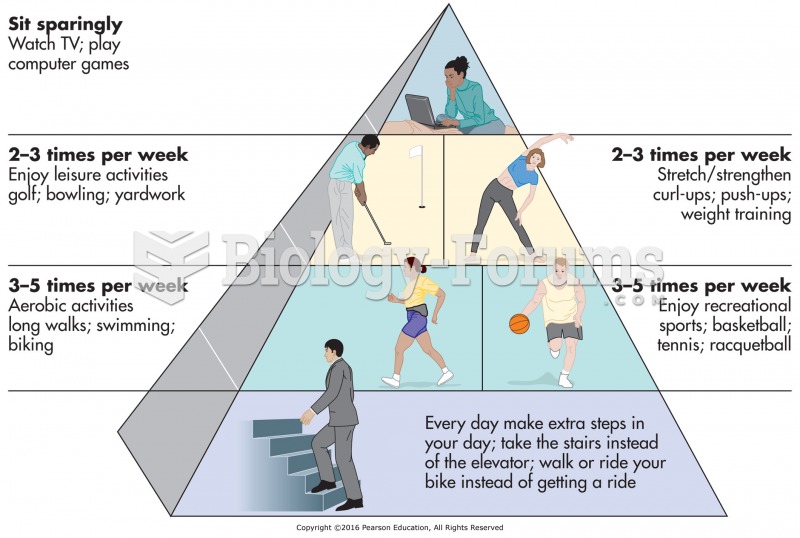Answer to Question 1
Here are some tips for sustaining a physical activity program:
1 . Check with your physician before starting any physical activity program or weight loss plan. Your doctor can assess your ability for a given level of activity and refer you to qualified professionals for assistance, such as physical therapists, exercise physiologists, dietitians, and/or certified personal trainers.
2 . Find an exercise buddy. You can motivate each other. Use a gradual approach and set realistic goals. Don't jump out of bed tomorrow morning and expect to be able to run 10 miles. Set a realistic smaller first goal and use it as motivation to set your next goal. Experiment a little to find the time that is right for you to exercise. Many people like to exercise in the morning before their day begins. If you try that and it doesn't work, don't give up. You might have more luck with a lunchtime routine or an after-work exercise schedule.
3 . Don't overdo it, especially in the beginning Listen to your body and let it set the pace while still challenging yourself. No pain, no gain is a myth that can be dangerous.
4 . Don't focus on weight loss. Focus on your new energy level and how much better you feel as your clothes start to fit again
Answer to Question 2
Maximum heart rate (MHR) is an estimated value representing the absolute maximum heart rate possible for a person your age. You should never exercise at this rate, of course.
Estimate your maximum heart rate (MHR). Subtract your age from 220.
Target heart rate is the heartbeat rate that will achieve a cardiovascular conditioning effect for a given person: fast enough to push the heart, but not so fast as to strain it.
Determine your target heart rate range. Multiply your MHR by 55 percent and 90
percent to find your upper and lower limits.
Example: 25-year old person
MHR = 220 - 25 = 195
Target heart range is 107 to 175
195 X 55 = 107
195 X 90 = 175







